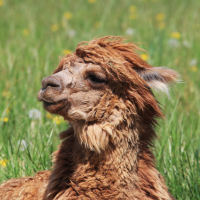technical question please
Hi all, good morrow,
I have a Rebel 300D. (newbie) When setting my Fstop on AP of say 22 and letting shutter speed take care of it's self, to get the photo to expose correctly I'm compensating within the camera for snow of about 1 and 2/3 stops. My question is, where does this compensation take place, in the apeture setting? or the shutter speed. Also, what does the F stand for in fstop. This is the picture (ignore the composition) I'm just trying to get detail and snow and plant color correct. Also, the AP was 22 and shutter speed 1/6 (thats what it's telling me) before compensating, I'm assuming thats one sixth of a second right? Scuse lack of knowledge, trying real hard here...
Ta ever so.
Lynn
I have a Rebel 300D. (newbie) When setting my Fstop on AP of say 22 and letting shutter speed take care of it's self, to get the photo to expose correctly I'm compensating within the camera for snow of about 1 and 2/3 stops. My question is, where does this compensation take place, in the apeture setting? or the shutter speed. Also, what does the F stand for in fstop. This is the picture (ignore the composition) I'm just trying to get detail and snow and plant color correct. Also, the AP was 22 and shutter speed 1/6 (thats what it's telling me) before compensating, I'm assuming thats one sixth of a second right? Scuse lack of knowledge, trying real hard here...
Ta ever so.
Lynn
0

Comments
The answer to your first question - in aperture priority (AP) exposure compensation will adjust the shutter speed. It will leave the aperture alone.
I can't remember the answer to your second question about the origin of the "F" in F-Stop.
Third question - Yes, a shutter speed of 1/6 is one sixth of a second.
Hope this helps.
-Eric
The 'F' in f-stop comes from f-number which derives from the ratio of the diameter of the lens to the focal length. F-stops represent points where there is a doubling of light and are set at powers of the squareroot of 2. Thus the stops at 1.4, 2, 2.8, 4.0, 5.6, 8.0, 11, 16, 22
2.0 = 1.4 * 1.4
2.8 = 1.4 * 1.4 * 1.4
4.0 = 1.4 * 1.4 * 1.4 * 1.4
5.6 = 1.4 * 1.4 * 1.4 * 1.4 * 1.4
...
11.2 = 1.4 * 1.4 * 1.4 * 1.4 * 1.4 * 1.4 * 1.4
And so forth.
You can get a pretty good idea of a lens' max f-number by just dividing the focal length by the front diameter of the lens. (just the glass). So a 50mm f1.8 lens should have a front element of 50/1.8=27.8mm and a 300mm f5.6 should have a front element of 300/5.6=53.6mm. Do remember that lens design is very complex these days and especially with zooms and ultrawides the lenses do not obtain the theoretical limit.
Operating System Design, Drivers, Software
Villa Del Rio II, Talamban, Pit-os, Cebu, Ph
It's so great to have this resource to learn from, I thank you.
Lynn
A good rule to know is that for a sunlit day with an ISO speed of say 200 - that the exposure for a normal grassy landscape is 1/ISO speed at f16 - so 1/200 at f16 for 200 IOS setting - open two stops for sunlit snow and bang 1/200 at f8 for ISO 200.
Are you using a camera that shows you a histogram? Like a 300D? If you are - look at the histogram and it will tell you what to do - Go to http://www.luminous-landscape.com/tutorials/understanding-series/understanding-histograms.shtml for an excellent discussion of histograms usage by a previous professor of photography.
Moderator of the Technique Forum and Finishing School on Dgrin
Lynn
Thank you thank you!! I'M OFF-READY TO TAKE THE PICTURE OF THE YEAR!
Go to the luminous landscape link I posted above. M Reichman explains it all in much better detail than I can here. But once you understand and can use the histogram your exposures will improve dramatically
http://www.luminous-landscape.com/tutorials/understanding-series/understanding-histograms.shtml
Moderator of the Technique Forum and Finishing School on Dgrin